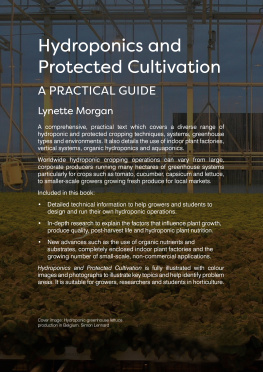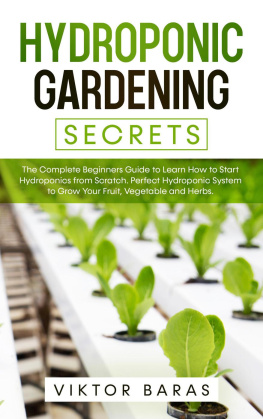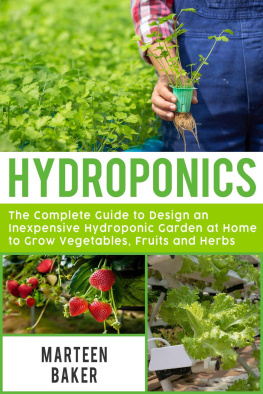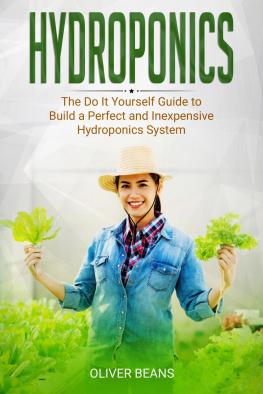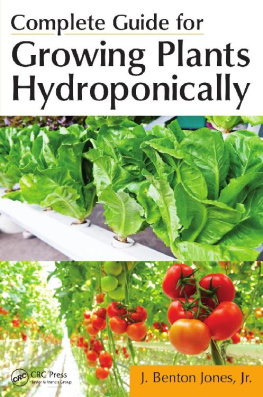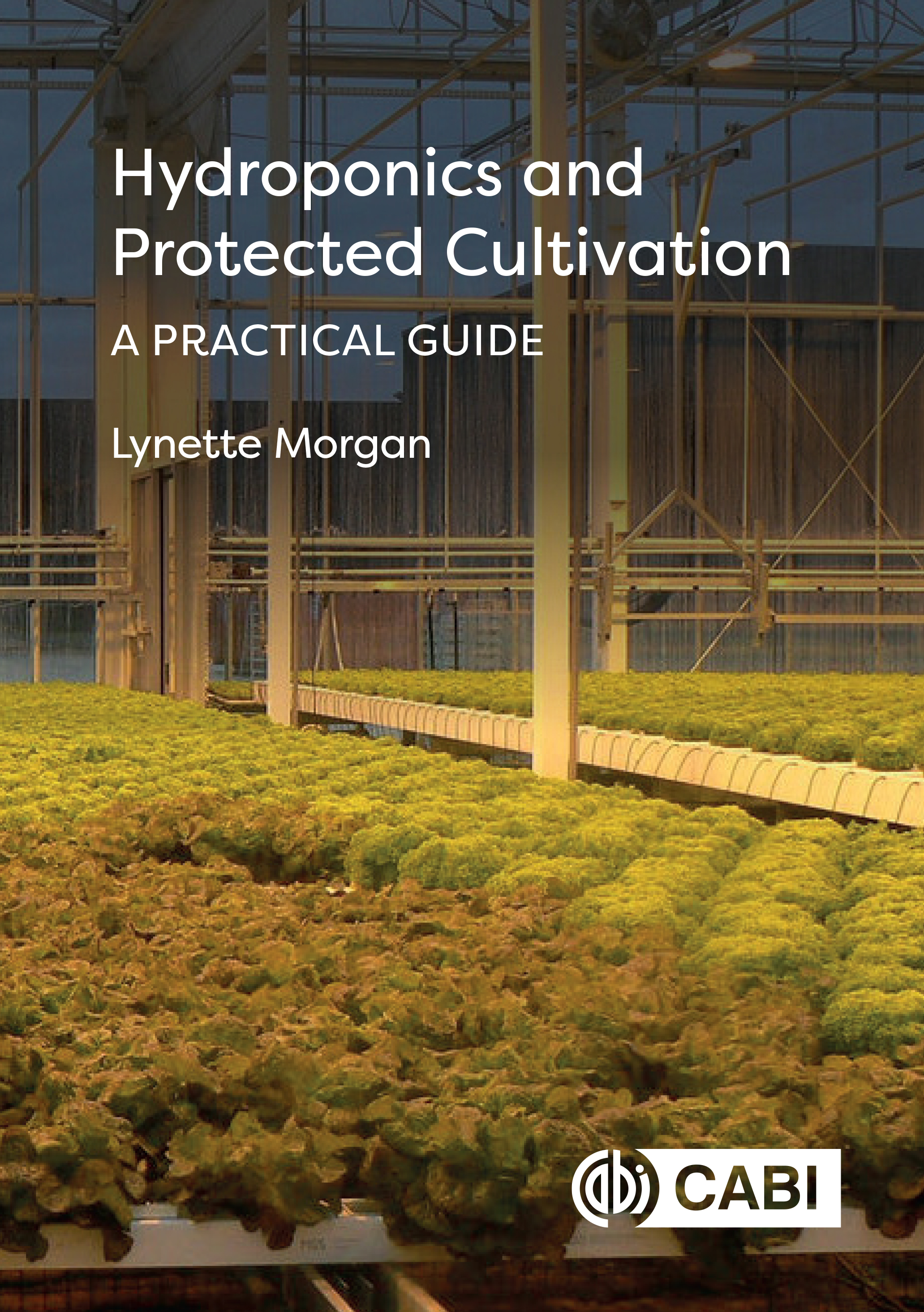
Hydroponics and Protected Cultivation
A Practical Guide

Hydroponics and Protected Cultivation

A Practical Guide
Lynette Morgan

CABI is a trading name of CAB International
CABI | CABI |
Nosworthy Way | WeWork |
Wallingford | One Lincoln Street |
Oxfordshire OX10 8DE | 24th Floor |
UK | Boston, MA 02111 |
USA |
Tel: +44 (0)1491 832111 |
Fax: +44 (0)1491 833508 | Tel: +1 (617)682-9015 |
E-mail: | E-mail: |
Website: www.cabi.org |
Lynette Morgan 2021. All rights reserved. No part of this publication may be reproduced in any form or by any means, electronically, mechanically, by photocopying, recording or otherwise, without the prior permission of the copyright owners.
A catalogue record for this book is available from the British Library, London, UK.
Library of Congress Cataloging-in-Publication Data
Names: Morgan, Lynette, 1970- author.
Title: Hydroponics and protected cultivation : a practical guide / Lynette Morgan.
Description: Boston, MA : CAB International, [2021] | Includes bibliographical references and index. | Summary: A comprehensive, practical text which covers a diverse range of hydroponic and protected cropping techniques, systems, greenhouse types and environments. It also covers related subjects such as the use of indoor plant factories, vertical systems, organic hydroponics, aquaponics and other systems-- Provided by publisher.
Identifiers: LCCN 2020046993 (print) | LCCN 2020046994 (ebook) | ISBN 9781789244830 (hardback) | ISBN 9781789244847 (ebook) | ISBN 9781789244854 (epub)
Subjects: LCSH: Hydroponics. | Greenhouse management. | Cropping systems.
Classification: LCC SB126.5 .M674 2021 (print) | LCC SB126.5 (ebook) | DDC 631.5/85--dc23
LC record available at https://lccn.loc.gov/2020046993
LC ebook record available at https://lccn.loc.gov/2020046994
References to Internet websites (URLs) were accurate at the time of writing.
ISBN-13: 978 1 78924 483 0 (hardback)
978 1 78924 484 7 (ePDF)
978 1 78924 485 4 (ePub)
Commissioning Editor: Rebecca Stubbs
Editorial Assistant: Emma McCann
Production Editor: Shankari Wilford
Typeset by SPi, Pondicherry, India
Printed and bound in the UK by Severn, Gloucester
Contents


I would to thank Urban Crop Solutions (Belgium) and the Eden Project (UK) for supplying images for use within this publication. I would also like to thank Simon Lennard (Suntec NZ Ltd) for assistance with images and diagrams, and for the content guidance provided throughout the writing process.
Protected cultivation of horticultural crops involves the use of structures, barriers, films, mulches, screens, glass and other materials to provide a modified and more favourable environment for optimal plant growth. The main objectives of this environmental modification are multiple and include protection from damaging natural elements such as wind, rain, hail, snow, frost, cold/high temperatures, excessive light, insects and predators, as well as providing conditions which increase yields and quality. Further advantages of modern protected cultivation structures now incorporate the efficient use of scarce water, fertilizer, energy and land resources with greater productivity per unit area, allowing production in regions otherwise unfavourable for cropping and for out-of-season supply of fresh local produce worldwide. More recent innovations in the 21st century have included the continued development of the closed environment greenhouse allowing growers complete control of all environmental factors and high-value crops grown on a large scale inside warehouses or indoor areas using only artificial light, intensive climate control and hydroponic growing methods.
While modern, high-technology protected cropping such as greenhouses incorporate a vast array of computer-controlled equipment and processes for precise environmental modification, the earliest forms of such structures were basic and mostly aimed at protecting sensitive crops from cold damage. Early Roman gardeners grew cucumbers under frames glazed with oiled cloth or sheets of mica, plants were transported outside into the sun while contained in wheeled carts and taken back inside at night to prevent cold damage. This method was reportedly used to grow cucumber fruit for the Roman emperor Tiberius Caesar (AD 1437) (Pliny the Elder, 77 CE). By the 1300s1500s, rudimentary greenhouse-type structures were being built in Italy and France to house exotic crops and grow flowers with minimal environmental modification, along with glass bells to house individual plants. By the 1600s, the first fully heated glasshouses were being used in Europe, the most well-known example being orangeries: solid-walled structures, using glass on the southern side to trap sunlight, with stoves to provide additional heat. Greenhouses using hot water for heating, improved glass panelling and construction techniques were also developed in Europe in the late 1600s, allowing a rapid expansion in forcing crops during the 1700s1800s ().
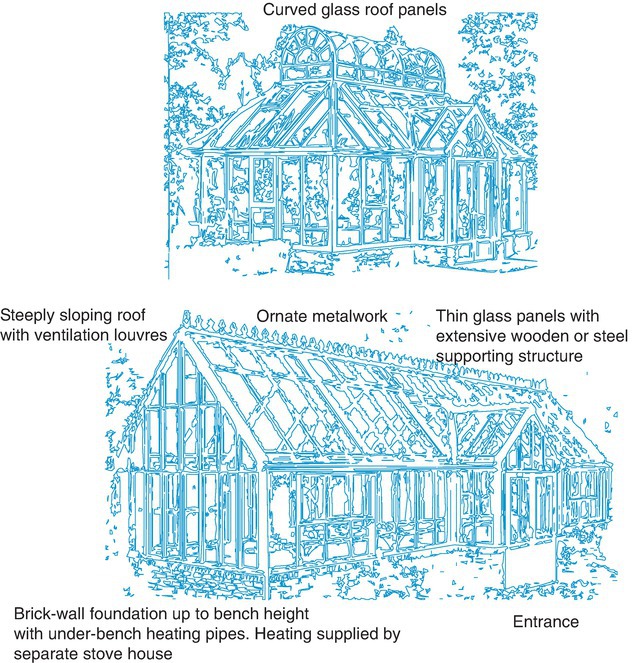
Fig. 1.1. Examples of Victorian glasshouse construction.
In China, Japan and Korea, glasshouses were built as a low structure with glass only on the roof and southern wall, the northern and side walls were constructed of either concrete or adobe embanked with bales of rice straw for insulation ().

Fig. 1.2. The conservatory at Kew Gardens, London.
By the 1950s and 1960s greenhouse technology was changing rapidly with the increased availability of plastic cladding films, the development of drip irrigation in Israel and the gradual uptake of soilless cultivation (hydroponic methods). Tunnel or hoop houses began to make an appearance as low-cost alternatives to traditional glass-clad structures which resulted in many more small farmers having access to protected cultivation methods. By the 1970s polyethylene films were developed with improved ultraviolet (UV) inhibitors and a longer lifespan, with gutter-connected greenhouses coming into increased use by the 1980s and 1990s. In the 20th century, significant increase in greenhouse production of a wide range of high-value crops was occurring in Asia and Mediterranean countries, largely fuelled by the development of plastic for non-heated greenhouse construction which expanded into large areas of Almeria in Spain, Italy and China. By 2010, the estimated protected cultivation area worldwide was 1,905,000 ha of greenhouses and 1,672,000 ha of low tunnels and floating covers; this huge increase in area under cultivation in recent decades was largely due to expansion in China ().
Next page
